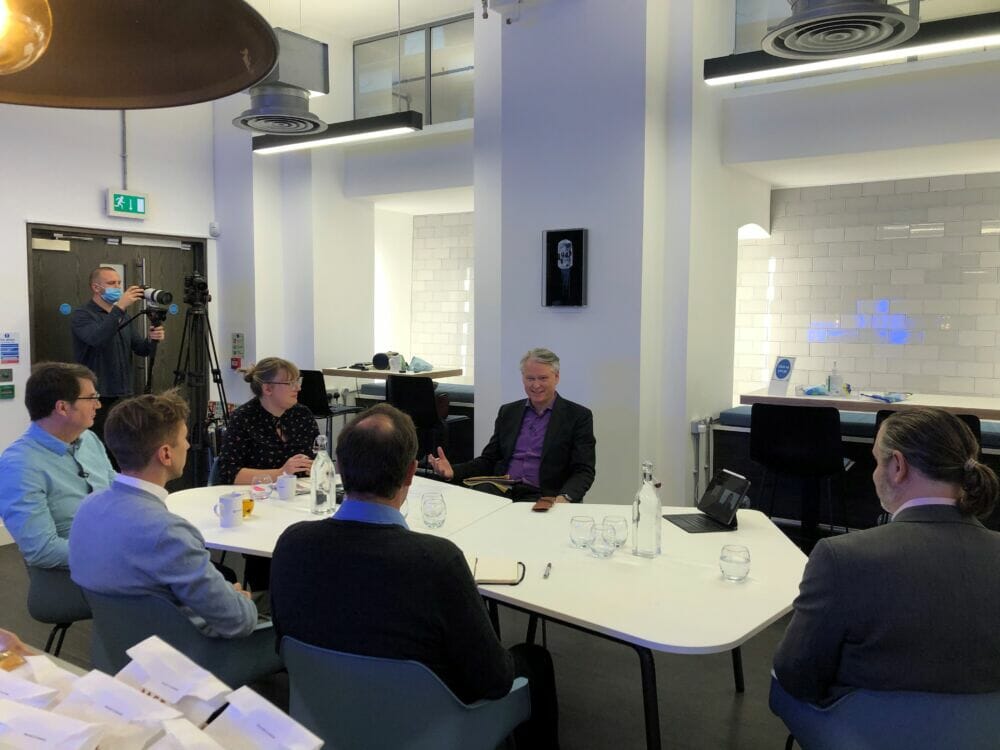
Real estate consultancy Concert recently led a conversation on sustainability, something that has crept up the agenda for both individuals and big businesses, but in the construction sector, as well as in other industries, there is the issue of whether being sustainable is prohibitively expensive. Despite the best intentions to take the most sustainable route, we are often thwarted by red tape, availability of resource and unfortunately cost.
The roundtable comprised a team of leading industry experts as well as individuals from other sectors; from Concert was Director Paul Body, alongside Hamish Grant Chief Growth Officer at Square Mile Farms, Paul Scriven, Energy & Sustainability Director at HDR, Ali Hood, Owner at ROO Coffee, Ana Rita Martins, Senior Associate, Sustainability and Architect at Woodalls, Clive Hall, Director at BDG architecture + design and Sean Nutley, CEO at ELESS CONSTRUCTION.
If we rewind just a few decades, sustainability wasn’t as widely known. Although we have come a long way, the construction sector has a real need to address the issue of sustainability, as the built environment is responsible for 40% of carbon emissions. Designers and other within the industry really need to change behaviours in order to make a difference. They really can act as a change agent for their clients.
One of the issues raised in the discussion was built-in obsolescence. Only two or three generations ago, it was the norm to repair things rather than buy new. And as for architects, designers, cost consultants and engineers that means we need to consider whether we really need to demolish buildings. Is that really the right thing to do when the levels of embodied carbon contained within existing, decades-old buildings can be enormous?
The simple fact is we can repurpose buildings. We need to start appreciating that there are times and places when this is the right choice. It requires paying close attention to decisions at every design stage at CAT A and beyond. In this way, we can show how to deliver a radical transformation of a building, using its existing core structure. Elements such as rooftops can be repurposed to form extra working areas, events spaces and even things like urban farming propositions. Retrofitting in this way means using less materials and recycling and repurposing existing materials. The potential to breathe new life into these buildings is genuinely huge. But the commitment has to be there from all those involved to decide not to replace an old building with a shiny new one.
Built environment professionals have a duty to educate and guide clients to deliver a framework for them, incorporating everything from the right ventilation to the right certifications to achieve a client’s net zero goals. We also need to ask clients where sustainability sits within their priorities. Creating a sustainable mindset means designing with quality and creating value in what you’re doing.
There are two levers to this game: it’s either cost or revenue. How much does implementing sustainable initiatives cost my business and what will I gain from it? Putting sustainability front and centre within a project doesn’t have to mean a cost premium. There are other gains to be had from raising the bar in terms of employee experience, increasing long-term tenancies and attracting new talent. The costs incurred shouldn’t be thought of as such but rather as an investment for the long term.
The key is looping everyone together from the contractor to the supply chains and manufacturers and, of course, clients. The more we can repurpose sites and the less we can leave to landfill, the better. In summary, making sustainable choices is about meeting the needs of the present without compromising the needs of future generations. It’s been quite the journey for all those in the built environment and there is undoubtedly a good deal of change in the industry to come.
Click here to watch the roundtable: www.weareconcert.com/is-being-sustainable-prohibitively-expensive/
